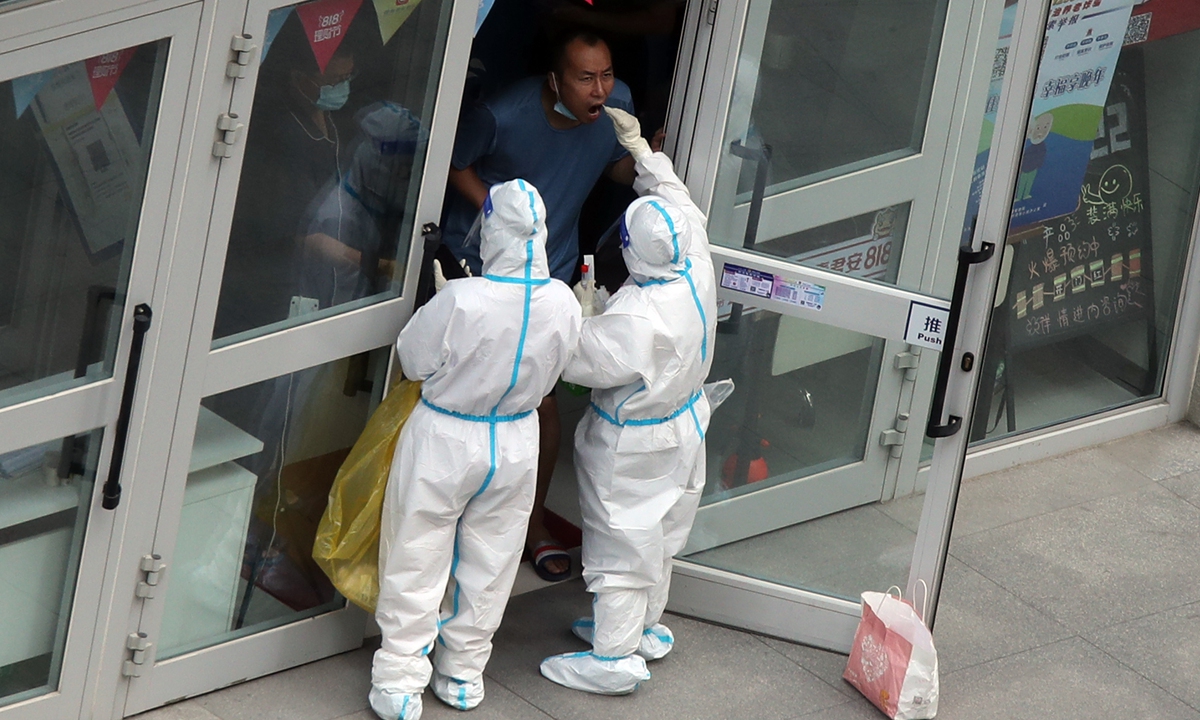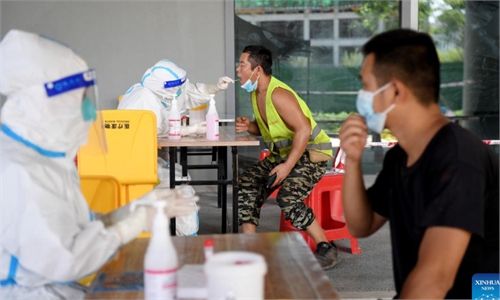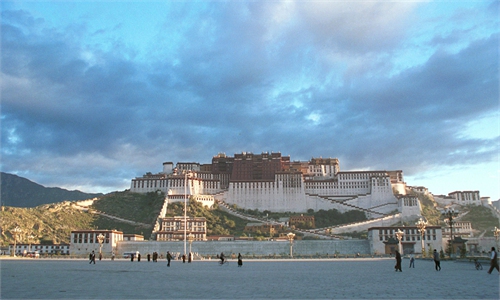Over 2,000 tourists still stranded in NW China's Xinjiang; circuit break mechanism initiated for trans-provincial tourism

A resident takes a nucleic acid test in Urumqi city, Northwest China's Xinjiang Uygur Autonomous Region on August 13, 2022. Photo: IC
Over 2,000 tourists are still stranded in Northwest China's Xinjiang Uygur Autonomous Region as of Saturday evening with over 92,000 tourists having already been evacuated from the region's 15 5A-level scenic spots since August 2, due to the sudden COVID-19 flare-up in the region since the end of July that terminated tourists' travel agenda in advance.
Statistics obtained by the local prefecture and city governments showed that a total of 2,003 tourists from other provinces had been stranded across Xinjiang region as of 8 pm on Saturday, with the majority distributed in the Ili Kazak autonomous prefecture, Turpan city, Kashi prefecture, Urumqi city, and the Bortala Mongolian autonomous prefecture, according to the press briefing held by the Xinjiang regional government on Saturday.
A staffer from the Southern Airlines Pearl International Hotel in Urumqi told the Global Times on Sunday that all the 20 or so individual tourists from other provinces have returned to their hometowns as of August 9.
"Due to the epidemic situation this year, there were not many tourists and we had made sufficient plans for tourists to cancel their reservations, in case COVID-19 flare-up occurred," the staffer said.
Since August 2, 20 counties, cities and districts in eight prefectures and cities including Yining city and Yining county in Ili prefecture, Tianshan district in Urumqi city, Aksu city in Aksu prefecture and Gaochang district in Turpan city have practiced circuit break mechanism for trans-provincial tourism with relevant group tours that are arriving at and departing from these places as well as ticket and hotel services in these places suspended.
The Xinjiang cultural and tourism authority has established a set of service guarantee mechanism to direct related departments in solving the problems of the stranded tourists and providing assistance for tourists to return home.
The authority demanded that hotels, hostels and homestays are required to unconditionally refund any deposit from tourists affected by the epidemic.
COVID-hit places including Ili, Urumqi, Turpan and Aksu have offered stranded tourists accommodation fees reduction or discounted cost prices. The local officials and volunteers have also sent fruits and tourist souvenirs to the stranded tourists.
The cultural and tourism departments across Xinjiang have arranged vehicles and coordinated with local epidemic prevention and control department after calculating the number of inbound and outbound tourists and tourist groups, schedules of flights and trains, hotel accommodation and other information in advance to assure the tourists' smooth return trip.
Xinjiang reported two confirmed COVID-19 cases and 396 asymptomatic infections on Saturday, bringing the accumulated number of confirmed patients to five and the tally of silent carriers to 2,034, according to the Saturday press briefing.
Some of the infected people had already spread the virus latently before their nucleic acid test results showed positive, Hu Zhichun, an official from Xinjiang health commission said during the Saturday press briefing.
Since July 30, the flare-up in Xinjiang region was caused by Omicron BA.5.2 variant which has a stronger immune escape ability, stronger transmission capacity and faster transmission speed. This variant has spread to 31 counties, cities and districts in 13 prefectures and cities with a fast transmission speed.
The flare-up originated in freight venues and gathering places of large crowds of people, but turned into family cluster infections after control management was posed.
The flare-up with complicated transmission relations has four transmission chains and no obvious epidemiological correlation have been found among the transmission chains.
The majority of the 2,034 infections are asymptomatic carriers with only five confirmed cases. So far, 14 designated hospitals and three makeshift hospitals have been put into use with all the positive infections receiving effective treatment.




